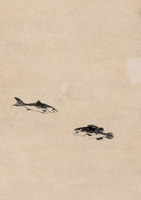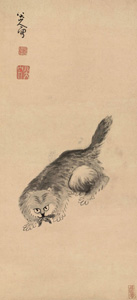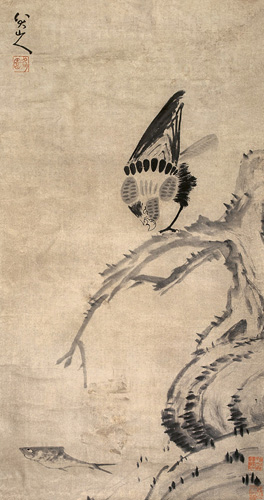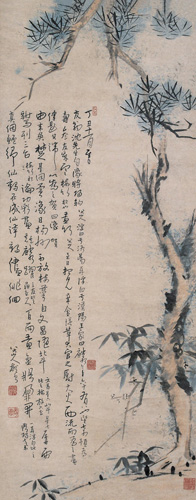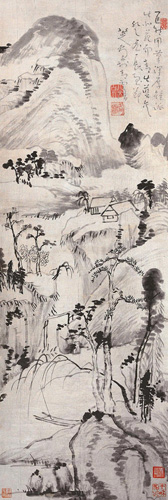Home >> Art >> Painting >> Masters >> Zhu Da Painting Gallery Calligraphy Gallery
Bada Shanren (八大山人, literally "Mountain Man of the Eight Greats", ca.1626-1705) , born as Zhu Da (朱耷), was a Chinese painter and calligrapher. He was of noble lineage, being a descendant of the Ming dynasty Prince of Ning (寧王) - Zhu Quan (朱權).
A child prodigy, Zhu Da began painting and writing poetry in his early childhood. After the collapse of the Ming dynasty, Zhu Da became a Buddhist monk in 1648. Possibly the fall of that dynasty and the death of his father at about the same time caused him some psychic disturbance, and he may have hovered between real insanity and impassioned creativity. He eventually left the Buddhist cloister and exhibited wildly erratic behavior – such as writing the character for “dumb” (ya, 哑) and attaching it to his door and then refusing to speak.
In his paintings, usually in ink monochrome, such creatures as birds and fishes are given a curious, glowering, sometimes even perverse personality. He used an abbreviated, wet style that, while deceptively simple, captures the very essence of the flowers, plants, and creatures he portrays. His flower-and-bird paintings, executed in the “sketching ideas (xieyi, 寫意)” style, were influenced by Chen Chun (陳淳) and Xu Wei (徐渭) of the Ming. He also painted landscapes in a dashing shorthand inspired by the 10th-century masters Dong Yuan (董源) and Juran (巨然). Unlike most Chinese painters, he does not easily fit into any traditional category; in character and personality he was the complete eccentric and “individualist.”
Artworks by Zhu Da (view the entire painting gallery)
